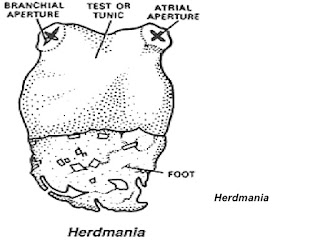Describe Herdmania Life Cycle With Anatomy

Herdmania Many different water creatures make their home in the deep and unknown region of the ocean. Each of these species has its own distinct style of surviving and responding. The Herdmania, also known as the stalked sea squirt or sea vase, is one of these intriguing creatures. This amazing marine creature shows us how underwater worlds work by combining its anatomy, behaviors, and habitat in a unique way. Anatomy and Morphology : Herdmania is a sea organism that belongs to the tunicates family, popularly known as "sea squirts." The bodies of these animals are distinctive and unique. Herdmania's tube-shaped body can remind you of a vase or a stem, which is why it is given those titles. The sea squirt's outside is protected by a thick and leathery shell that keeps it safe and durable. Herdmania, a unique sea creature, has an amazing method of cleaning its environment. It cont...
